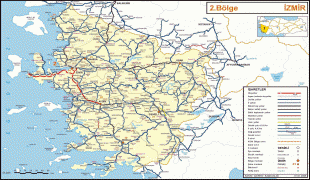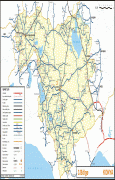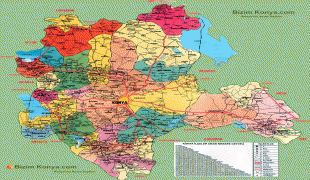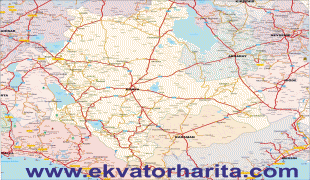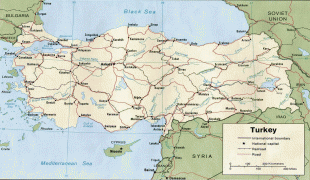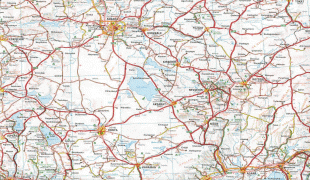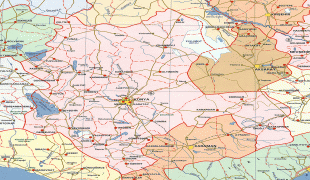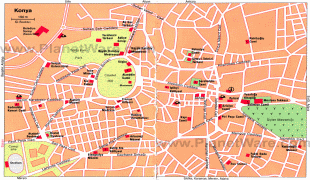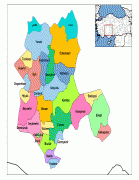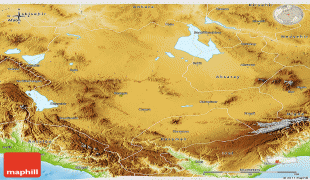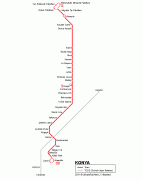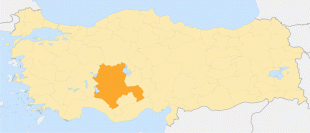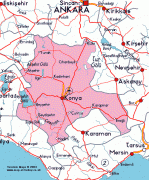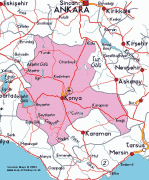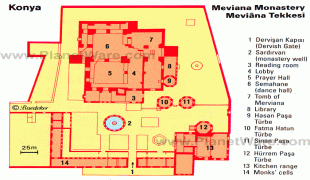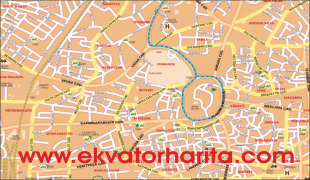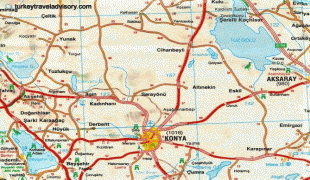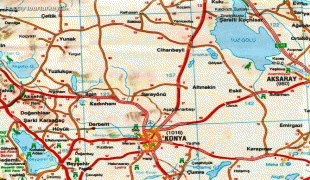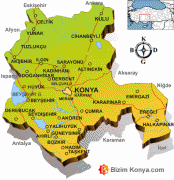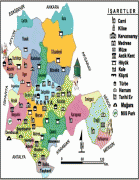Konya
Konya is a major city in central Turkey, on the southwestern edge of the Central Anatolian Plateau, and is the capital of Konya Province. During antiquity and into Seljuk times it was known as Iconium (Ἰκόνιον), although the Seljuks also called it Darü'l-Mülk, meaning "seat of government". In 19th-century accounts of the city in English its name is usually spelt Konia or Koniah. In the late medieval period, Konya was the capital of the Seljuk Turks' Sultanate of Rum, from where they ruled over Anatolia.
As of 2021, the population of the Metropolitan Province was 2,277,017, making it the sixth most populous city in Turkey, and second most populous of the Central Anatolia Region, after Ankara. Of this, 1,390,051 lived in the three urban districts of Meram, Selçuklu and Karatay. Konya is served by TCDD high-speed train (YHT) services from Istanbul and Ankara. The local airport (Konya Havalimanı, KYA) is served by flights from Istanbul.
Konya was known in classical antiquity and during the medieval period as Ἰκόνιον (Ikónion) in Greek (with regular Medieval Greek apheresis Kónio(n)) and as Iconium in Latin. Ikónion is the Hellenisation of an older Luwian name Ikkuwaniya.
Some claim that the name Ikónion was derived from εἰκών (icon), referring to an ancient Greek legend according to which the hero Perseus vanquished the native population with an image of the "Gorgon Medusa's head" before founding the city.
As of 2021, the population of the Metropolitan Province was 2,277,017, making it the sixth most populous city in Turkey, and second most populous of the Central Anatolia Region, after Ankara. Of this, 1,390,051 lived in the three urban districts of Meram, Selçuklu and Karatay. Konya is served by TCDD high-speed train (YHT) services from Istanbul and Ankara. The local airport (Konya Havalimanı, KYA) is served by flights from Istanbul.
Konya was known in classical antiquity and during the medieval period as Ἰκόνιον (Ikónion) in Greek (with regular Medieval Greek apheresis Kónio(n)) and as Iconium in Latin. Ikónion is the Hellenisation of an older Luwian name Ikkuwaniya.
Some claim that the name Ikónion was derived from εἰκών (icon), referring to an ancient Greek legend according to which the hero Perseus vanquished the native population with an image of the "Gorgon Medusa's head" before founding the city.
Map - Konya
Map
Country - Turkey
 |
|
| Flag of Turkey | |
One of the world's earliest permanently settled regions, present-day Turkey was home to important Neolithic sites like Göbekli Tepe, and was inhabited by ancient civilisations including the Hattians, Hittites, Anatolian peoples, Mycenaean Greeks, Persians and others. Following the conquests of Alexander the Great which started the Hellenistic period, most of the ancient regions in modern Turkey were culturally Hellenised, which continued during the Byzantine era. The Seljuk Turks began migrating in the 11th century, and the Sultanate of Rum ruled Anatolia until the Mongol invasion in 1243, when it disintegrated into small Turkish principalities. Beginning in the late 13th century, the Ottomans united the principalities and conquered the Balkans, and the Turkification of Anatolia increased during the Ottoman period. After Mehmed II conquered Constantinople (Istanbul) in 1453, Ottoman expansion continued under Selim I. During the reign of Suleiman the Magnificent, the Ottoman Empire became a global power. From the late 18th century onwards, the empire's power declined with a gradual loss of territories. Mahmud II started a period of modernisation in the early 19th century. The Young Turk Revolution of 1908 restricted the authority of the Sultan and restored the Ottoman Parliament after a 30-year suspension, ushering the empire into a multi-party period. The 1913 coup d'état put the country under the control of the Three Pashas, who facilitated the Empire's entry into World War I as part of the Central Powers in 1914. During the war, the Ottoman government committed genocides against its Armenian, Greek and Assyrian subjects. After its defeat in the war, the Ottoman Empire was partitioned.
Currency / Language
| ISO | Currency | Symbol | Significant figures |
|---|---|---|---|
| TRY | Turkish lira | ₺ | 2 |
| ISO | Language |
|---|---|
| AV | Avar language |
| AZ | Azerbaijani language |
| KU | Kurdish language |
| TR | Turkish language |






